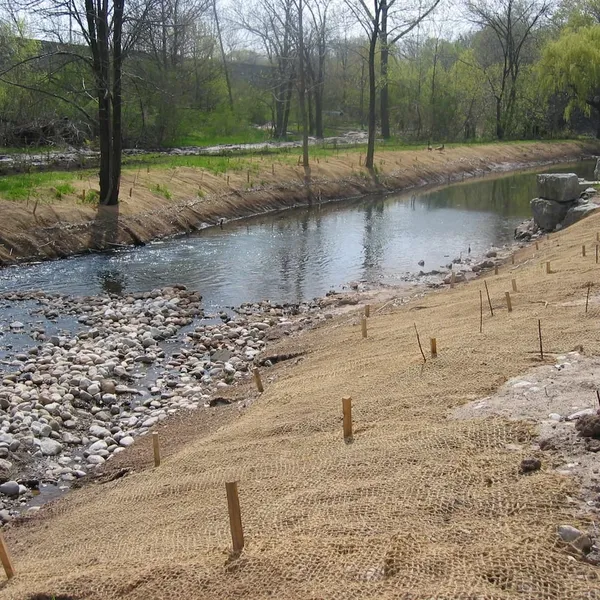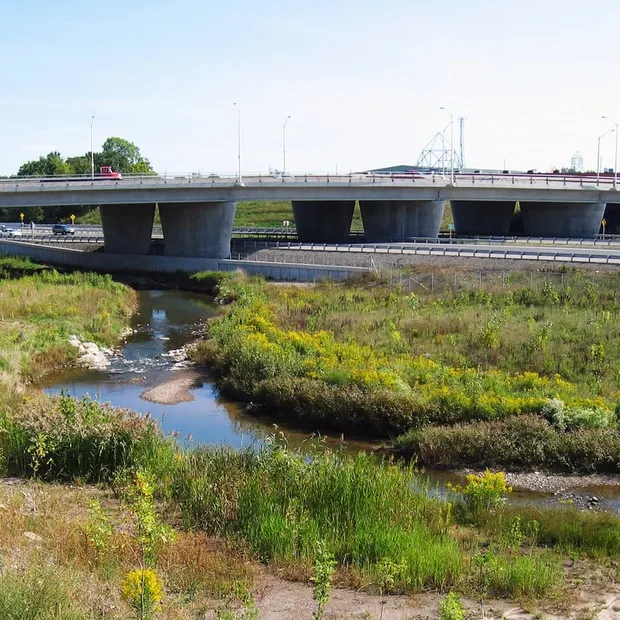Watercourse Design
Sustainable re-alignment, restoration, or enhancement of watercourses.
We design functional and healthy watercourse options by remedying erosion issues caused by urbanization and flooding.

Geomorphologists, engineers, ecologists, and landscape designers ready to problem-solve
Dougan Ecology’s extended team of associates work together to assess and problem-solve watercourse design in diverse spaces including urbanizing areas.
We use seeding, planting, and salvaged resources to create resilient waterways. We work with your team to coordinate implementation of watercourse designs throughout the construction process. Our designs include:
- Bank stability to prevent erosion
- Supporting or proliferating native species to ensure natural heritage preservation of the stream corridor
- Watercourse shade features for temperature regulation
We also incorporate detailed plans for contractors to create habitat features for amphibians, snakes, turtles, raptors, and fish spawning. Dougan Ecology was the first to offer watercourse design solutions in Ontario that include detailed plans for snake hibernacula, turtle nesting, raptor poles, and offline water features for amphibians.
We offer a range of services to help make your dreams for ecologically-sound projects a reality.

Frequently asked questions about watercourse design
Watercourse design restores and stabilizes natural waterways. It involves engineering and ecological techniques including re-meandering streams, bank stabilization, and in-stream habitat creation. The goal is to improve flow, habitat value, and resilience. Dougan’s ecologists coordinate with engineers to balance hydraulic function, wildlife needs, and regulatory compliance such as Fisheries Act and Conservation Authority standards.
Stream restoration improves ecological function and protects infrastructure. Healthy streams support aquatic life, reduce erosion, filter sediments, and mitigate flood impacts. Restoration efforts benefit fish, amphibians, invertebrates, and other wildlife while protecting roads, trails, and property. Such design supports watershed management goals outlined in local policies and conservation plans.
Bank stabilization is the use of bioengineering to prevent erosion in waterways. Techniques like live staking, coir logs, log cribs, and native plantings stabilize stream banks. These methods reduce sedimentation, improve water quality, and enhance riparian buffers. Bank stabilization is essential in sections affected by high flow or development.
Watercourse design is recommended before altering or developing near natural channels. Projects that impact watercourse, like crossing, grading, or shoreline alteration, typically require watercourse design and associated permits. Early planning avoids delays, aligns with Conservation Authority requirements, and ensures ecological integrity.
Hydrology, topography, substrate, and biodiversity data are used in watercourse design. Designs require site surveys, OSAP hydrologic assessment, sediment sampling, and habitat mapping. Data informs hydraulic models, geomorphic design, and plant palettes suited to flow regime and species needs.
